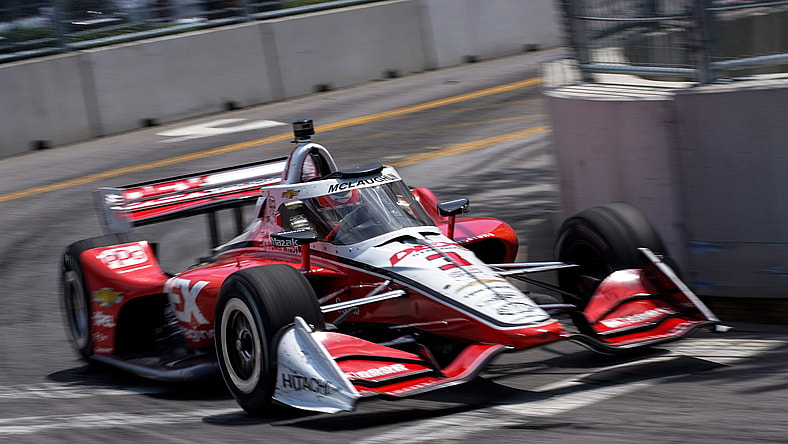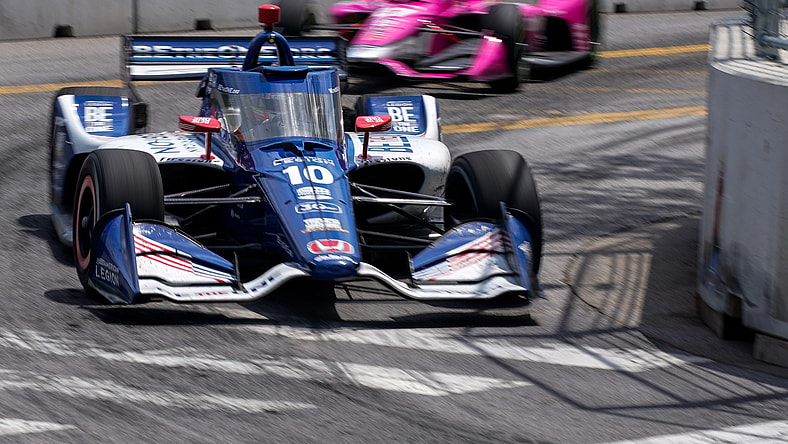To some, F1 and IndyCar might look similar, but they are quite different. Not only are the cars unique, but the racing styles and tracks are also special in their own way. Those interested in understanding the difference between F1 and IndyCar will find many of their answers below.
Related: F1 schedule – Practice, qualifying, race times, and where to watch
Explaining the difference between F1 and IndyCar

There are many similarities between F1 racecars and the IndyCar. Both offer a single-seat, open-wheel driving experience racers won’t get a taste of anywhere else. Yet, as mentioned, there are plenty of identifying factors setting these two race classes apart.
Vehicles in the IndyCar Series are all roughly the same. Each uses the same chassis and the same aerodynamic kit, with all engines coming from either Chevrolet or Honda. Another notable difference is the IndyCar has no power steering, giving drivers a bit of a workout while racing around the track due to the vehicle being tougher to steer.
Formula 1 cars do have power steering but are much more individualized, allowing for a great amount of customization. Even though the engines inside are from either Ferrari, Red Bull, Renault, or Mercedes, all ten teams have their own car design on the outside.
Vehicles from the IndyCar Series have the ability to reach higher top speeds, as high as 240 mph, but that doesn’t necessarily make them quicker than their more nimble F1 counterparts, which top out at roughly 220 mph.
Both cars also have different methods of safety. F1 uses a titanium ‘Halo’ to protect their drivers from incidents like head injuries. You’ve maybe noticed a curved bar just above and around the driver. That’s the Halo. The IndyCar Series also borrows the Halo method but includes an “aeroscreen” developed by Red Bull as another way to try and prevent serious injury.
Related: F1 results – Practice, qualifying, race results, and standings
Explaining the difference between F1 and IndyCar racing

One of the biggest differences between F1 and IndyCar racing is the track style. Both racing divisions feature intricate course designs, but unlike in F1 racing, the IndyCar Series also has drivers race around an oval-shaped course on occasion. Meanwhile, F1 racing doesn’t have any ovals, opting strictly for tracks with twists and turns that can present unique challenges coming in and out of every bend.
Related: American F1 drivers: See which Americans race F1 now and in the past
How fast do F1 cars go?
F1 cars don’t go as fast as those from the IndyCar Series. Yet, F1 cars reach speeds as high as 220 mph, sometimes a bit higher, but not much. Indy Car vehicles can go up to 240 mph, if not a bit more.
Related: Explaining the F1 points system: Everything you need to know about F1 scoring
How much does an F1 car weigh?
One factor that helps F1 cars travel at such a high rate of speed is their low vehicle weight. Believe it or not, F1 cars weigh just 1,759 pounds. This is less than half the weight of the average vehicle, which is roughly 4,000 pounds, with larger vehicles being heavier and smaller vehicles like sports cars weighing less.
F1 cars shed a lot of weight by not needing a trunk, additional seats, doors, and other convenient features enjoyed on the daily commute, like a radio or even air conditioning.
How much does an F1 car cost?
Vehicles vary in price, but the average F1 car costs $12-to-$16 million per automobile. F1 teams even have budgets for the entire race season. The budget for the 2023 season is $135 million.
An IndyCar costs about $4 million per vehicle, with the engine alone costing roughly $250,000.
Related: How much do F1 drivers make?